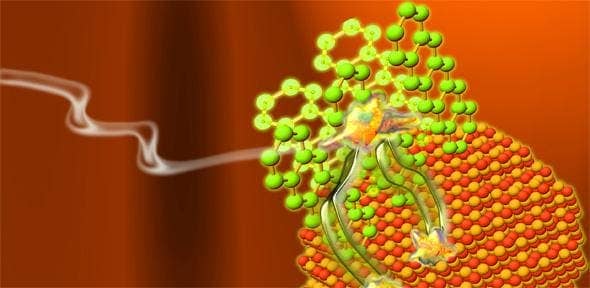A team at University of Cambridge have harvested so-called ‘dark’ spin-triplet excitons with close to 100% efficiency, a breakthrough achievement which could vastly improve the efficiency of hybrid solar cells that use both organic and inorganic semiconductor junctions.
An exciting solar future

Credit: Maxim Tabachnyk
Excitons are basically electrons coupled to a hole (they’re attracted to each other and form a pair). An electron gets excited to a higher band, leaving a hole in the lower band behind (a bit like a bubble on top of a liquid). In nature, excitons are indispensable to photosynthesis; when photons hit a plant’s chlorophyll molecules, excitations are generated which travel throughout the plant’s stem transferring energy.
[ALSO READ] Solar cells that mimic leaves put organic systems back in the picture
A solar cell works much in the same way, the key difference being that a semiconductor material (like silicon) is used instead of plant pigments. Light hits the p-n silicon junction to form one free electron that can be extracted as current. However, in pentacene, a type of organic semiconductor, the absorption of a photon leads to the formation of two electrons. Unlike the electrons generated by inorganic semiconductors, however, these are not free and they are difficult to pin down. This happens because of an underpinning effect associated with excitons, which come in two kinds: spin-singlet, also called ‘bright’ because their energy is easy to harvest, and spin-triplet or ‘dark’ triplet. Spin-triplets are called dark due to the way in which the electrons spin makes it difficult to harvest the energy they carry.
“The key to making a better solar cell is to be able to extract the electrons from these dark triplet excitons,” said Maxim Tabachnyk of the University’s Cavendish Laboratory, the paper’s lead author. “If we can combine materials like pentacene with conventional semiconductors like silicon, it would allow us to break through the fundamental ceiling on the efficiency of solar cells.”
This might soon be possible, considering the University of Cambridge team showed a transfer efficiency of more than 95% of triplet excitons to an inorganic semiconductor, using femtosecond laser spectroscopy techniques. Once transferred to the inorganic material, the electrons from the triplets can be easily extracted.
“Combining the advantages of organic semiconductors, which are low cost and easily processable, with highly efficient inorganic semiconductors, could enable us to further push the efficiency of inorganic solar cells, like those made of silicon,” said Dr Akshay Rao, who lead the team behind the work.
Is this a genuine step forward or another pipe dream, as we often get to see with solar cell tech? It’s hard to tell. First of all, we first need to see an organic/inorganic cell that works, and if it does, the researchers need to find a way to make it cheap. The next five years will be critical.
Findings appeared in the journal Nature Materials.






